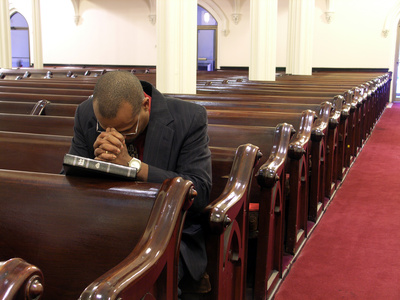
I only had four church experiences in vocational ministry. I served twice in traditional churches where God allowed us to bring a renewed energy and growth go established churches. I was also part of two successful church plants.
God was so good to us in each of these churches – we saw growth in the churches and the people. We loved every experience and the people in each church.
I remember in our last church, which was one of the established churches, that one of our staff members, had never served in a church plant. He was a great minister, but as we shared stories, he was fascinated by how different things were at times in church planting versus the established church.
Our conversation reminded me, as much as I love the established church, there were some things I missed about church planting.
There is a companion post needed of the things I enjoyed about the established church. There are certainly benefits to an established church. I actually encourage many pastors to consider church revitalization even over church planting. Look for these thoughts in my upcoming post.
I do love things about both worlds, but they are different in many ways.
Here are 7 things I missed about church planting:
There are few “pew sitters”.
Everyone has a job in a church plant – especially early in a plant, everyone feels needed. They know if they don’t do their part – Sunday will not happen. There’s an “all hands on deck” attitude each Sunday. Ownership is a shared mentality.
People far from God feel welcome.
People come to a church plant with less reservations or wondering if they will be accepted. Even though most – at least many – established churches would welcome them just as easily. I know ours will – thankfully. But perception can be a huge front door barrier. I’ve stated numerous times in our established church – sometimes the steeple can be the biggest hindrance. Don’t misunderstand, I love and appreciate our building and the opportunities it affords us as a church. I even love our steeple, and I’m thankful for the sacrifices of those who built it long before I arrived. There is great tradition and symbolism involved. But there is something about the rawness of a church with no building, meeting in a high school, theater or rented storefront, which invites people who don’t feel they “fit in” a traditional church setting.
You see people raw.
I heard a cuss word almost every other Sunday in church planting. And, it was a part of normal conversation. They didn’t know “church’ was a place for “nice” language. If they got drunk the night before – they told you. If they were struggling to believe in God – you knew it. There was no pretense. I would rather we all had “clean” language. Drunkenness is a sin. God can be believed without reservation. But it was refreshing to know where people really stood. There was no passive aggression or pretense – something I see often in the established church – afraid, perhaps, they wouldn’t be accepted otherwise.
People bring visitors every week.
People were so excited about the church they brought their friends. What a novel idea! Sure, it happens in the established church too, but it seemed to happen more frequently in a church plant. People in the established church often feel they’ve exhausted their contacts, all their friends are already in the church, or the newness and excitement of inviting has long since past. (Obviously, this is one of the major mindsets to challenge in church revitalization.)
Small steps are celebrated.
In an established church there are so many “mature” Christians – certainly people who know all the expectations of the church and appear to follow them – a newcomer far from God can often feel they don’t measure up at all. In a church plant, which often reaches people far from God, every baby step seems to be a major step.
Change is expected.
It’s not rejected. It’s not resisted. There are no politics or the “right people” you have to talk to before you implement. Everyone knows it’s part of the process. It’s in the DNA.
Rules are not cumbersome.
Granted, there were times we probably needed a few more rules in our church plant. As our church and staff grew, we needed more structure. But the longer we are together as an organization – any organization (including the church) – the more structured we become. And, sadly, the more protective we become of the structure also. Tradition forms and its much harder to adapt to what’s needed and new.
Those are a few things I missed about church planting. Church planting is an exciting time in ministry and, as hard as it is, it’s very rewarding. My prayers go out to my church planting friends.






 Logging you in...
Logging you in...
 Loading IntenseDebate Comments...
Loading IntenseDebate Comments...
Church planting is joining God in His unstoppable mission to multiply disciples from every nation by the power of the gospel. Church planting is uncomfortable and dangerous work. When Jesus calls you to take it up, he intends to draw near in previously unknown ways. If you are willing to respond in your soul to where God is calling you, you can take people with you. We plant churches because the same God who appointed this glorious end has also appointed the means to get there. God has entrusted His church with the gospel, and He works through the work of His disciple-making disciples to plant church-planting churches until Jesus returns. God is doing something big and breathtaking, and we get to be a part of it. This is why we plant and build churches with the gospel for the glory of God.
Hi Ron–
My name is Taylor Berglund and I'm a writer for Ministry Today magazine. I tried contacting you a couple weeks ago, but we never heard a response. We'd love to use this column in the May/June issue of Ministry Today. Do we have your permission?
-Taylor
I'm sorry, I didn't see your email. Sure, glad for you to. Thanks for asking and the opportunity.
The bridge between a church plant and the challenge of an established church is the trade-off between vision and structure. People need both to thrive.
Vision without structure fails because people don't have a context within which to accomplish the goals set up to pursue the vision. Who plays what role? How do you do _____? Whatever that "_____" is requires a structure to answer the question.
Structure without vision fails because there is no purpose for the structure. Where there is no vision, the only purpose of the structure is to maintain the structure, and people start to sense that that's all there is and they leave in search of a vision.
So your vision defines your structure and your structure supports your vision.
I've seen various observations on the difference between leaders and managers. Leaders develop the vision. Managers protect the structure. You need both leaders and managers and there will be natural tension between them. Leaders must realize that they shouldn't exceed the current structure. Managers must realize that the structure isn't permanent. But must agree on how to change the structure to serve the vision, which needs to happen at regular intervals.
In my current secular position I'm in more of a managerial role. We have leaders in other departments who like to go all-vision and blow the structure. It's my job to stop them so that we don't come to some financial ruin or someone goes to prison for mismanaging inventory, a la Enron. There is a way to change the structure to accomplish what they want to do, but we need to sit down and establish that change. Then my job is to implement that structural change in my area. I've been in my office nearly 15 years now and I don't do a single thing the same way I did it when I took this office. That's a good thing, because we have grown as a company. But it's remained a structured environment where everything we do can be accounted for.
It's the same way in a church. A church needs a vision beyond just showing up on Sunday mornings. My church does a number of things well. One of those is that we have a strong mission work, both here in our own backyard and also around the world. We have added Christian counselors available to the community to our staff as well as provided space for the local Child Evangelism Fellowship ministry. But we have also had other local missions that have have waxed and waned, like a ministry to motorcyclists and a ministry to singles. Structures for all of these have been added and removed as needed. As our international efforts have grown, we have had to create a missions committee to handle funds and develop relationships with missionaries inside of our our church as well as outside the church for the purposes of designating where specific funds go. This has been a necessary and beneficial structure for the church. I pray that our mission efforts only grow, but it could be that we would need to trim some of the tangential missions we are involved it at some time and the structure would need to change. Especially with the recent changes in the IMB, we need to continually revisit our roles and how we can best work with our IMB missionaries through this changes.
So, these are two different examples of this vision/structure dichotomy that helps us see where vision makes creating the structure for a new church plant exciting, but also how it is vital that the vision not become stifled by an immutable structure in an established church.
I love this.
I never comment on posts, but I resonate so much with this article! I was honored to plant a church 16 years ago. I have never felt so alive and totally connected to God as I did then. No pew sitters; people invite their friends; change is expected – Yes to all of that! The past 10 years, God has used me in a different way; working with established churches, identifying small sparks of energy and helping fan those flames. It is a form of revitalization, but short term. Through that work, I was asked and accepted the call as interim pastor at a 250+ year old urban church that is in serious need of revitalization. I read your "10 reasons to consider revitalization over church planting" article, and yes, there are some of those benefits. Security in funding; check. Structures; check. But the slow pace of change is very difficult. I appreciate the fact that you, too, have been through both settings, and I look forward to more thoughts and ideas. Thank you!
Yes, I think it's great to experience both. Praying for you as you transition this church. It's tough work. The longer it's been plateaued or declining the longer it takes to make the turn.